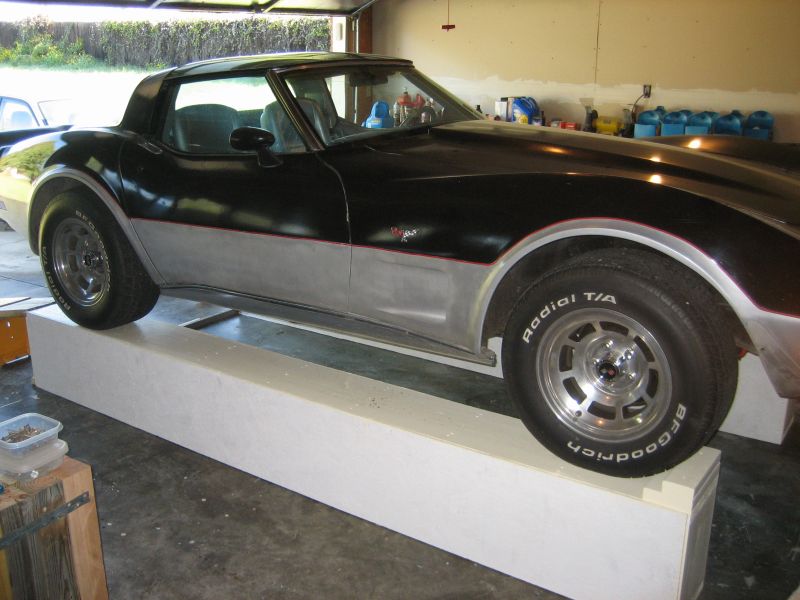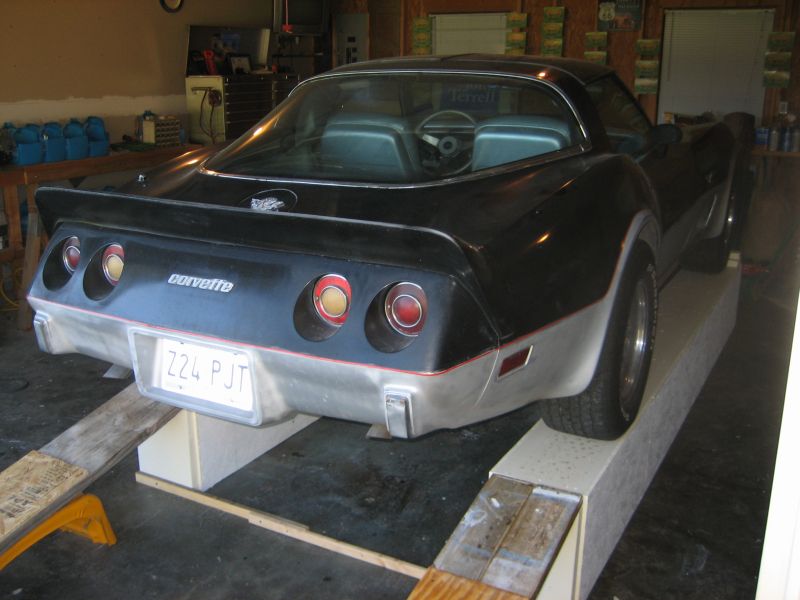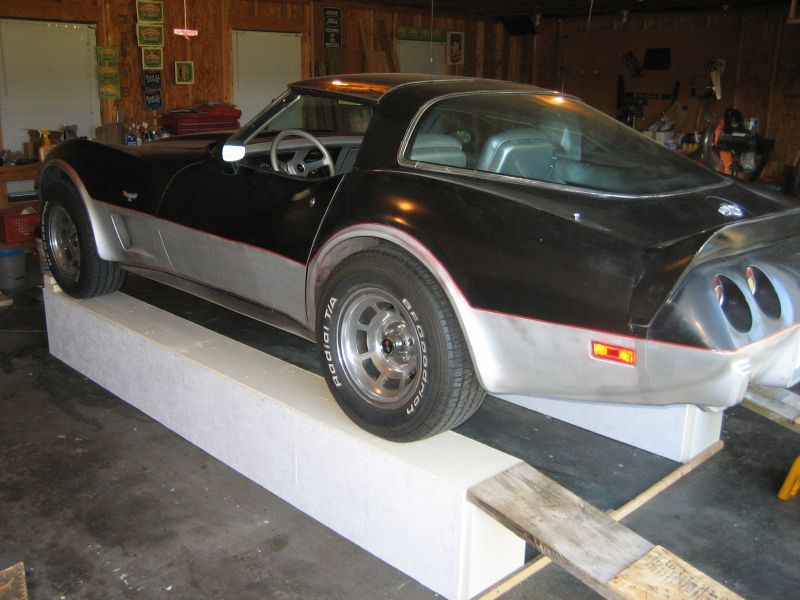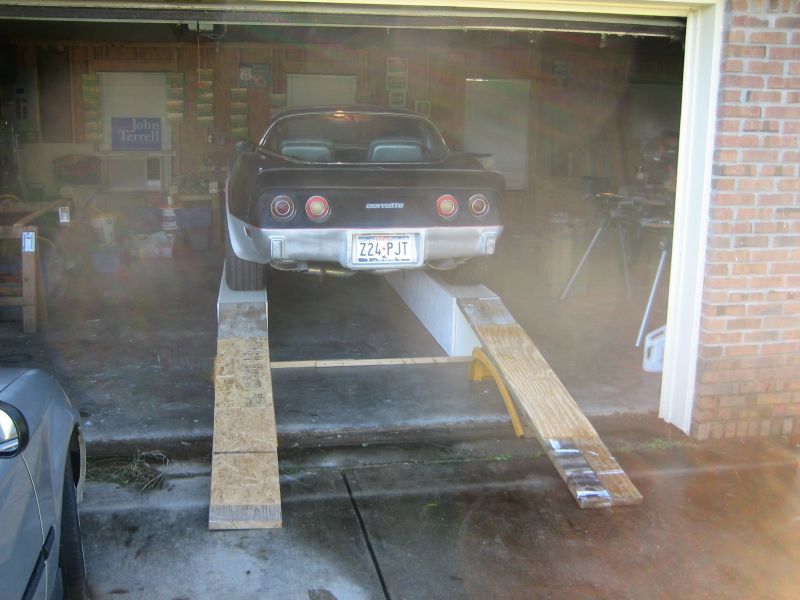
Build Ramps for your C2 or C3 Corvette
(An excellent alternative to expensive car hoists and car lifts)
Have you ever wished there was an easy way to get your Corvette up in the air so you could comfortably work under it? Here is a safe and inexpensive way to construct a set of portable ramps.
Instructions:
The ramps are indeed easy to build. Both sections are built identical. The ramps
are 10'9" in length. You can construct them from 2"x10" or 2"x12". In this set I
used 2"x10" and then nailed a couple of lengths of 1"x6" on each side on the
bottom to give some extra lateral support. (If you use 2"x12" you will
have more room to place a hydraulic jack under the frame in case you need to
place jack stands under the frame). The top and bottom are 2"x10"
or 12" with
2"X10" or 12" uprights on 16" centers. You will need 2 sheets of 1/2" plywood or wafer
board for the sides. Rip each sheet of plywood into 3 strips 16" wide. It will
take one sheet per ramp. Use 2 1/2" spiral nails or 2" drywall screws to
attach the
side pieces to your framework. Use 3 1/2" spiral on the actual framework. On the ends where the car comes
up, attach another piece of 2" x 10" to support the planks for driving the car up
on. These 2 planks only need to be about 7' long with a couple supports under
them. I used a couple of rubber ramps to support the planks. With that short a length my side pipes still clear fine.
You can
mount a couple of permanent lights and a 110v receptacle on the inner sides of
the supports if you wish. That makes it much easier than fighting power
cords. If you have a good level
floor they will be very stable and will
support a bulldozer. I can almost sit on the floor under the car but not quite.
I mark the floor with a felt marker so that each time it only takes me about 5
minutes to place them and drive the car up on them.
Here are some pictures of what your finished product will resemble.

Car parked on ramps awaiting the blocks behind the rear wheels.
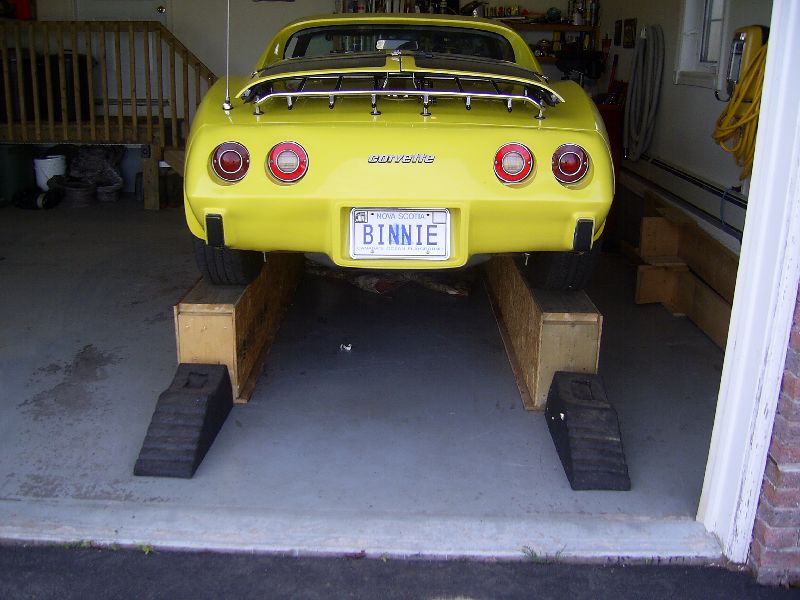
Ramps 2" wider than these will give you more room to place jack stands.

Note the blocks spiked up front for wheel stops.
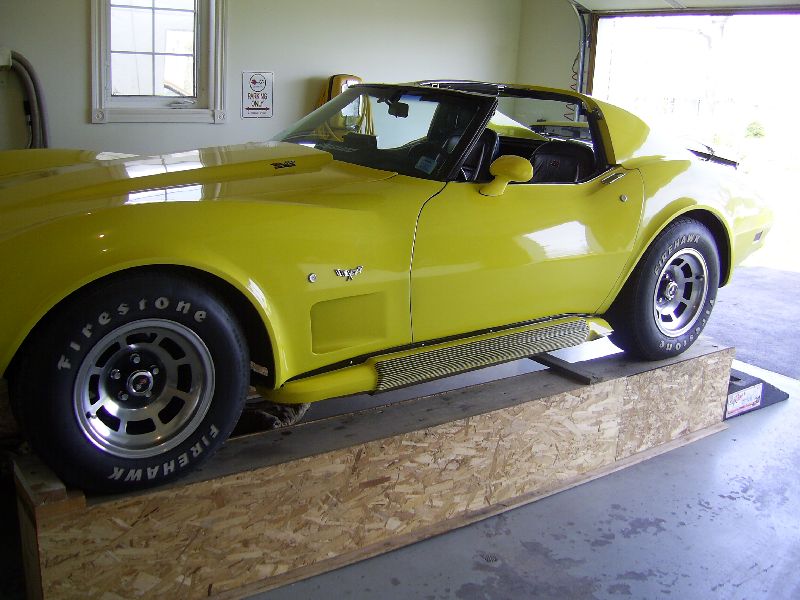

This gives you some idea of the height you have for working.
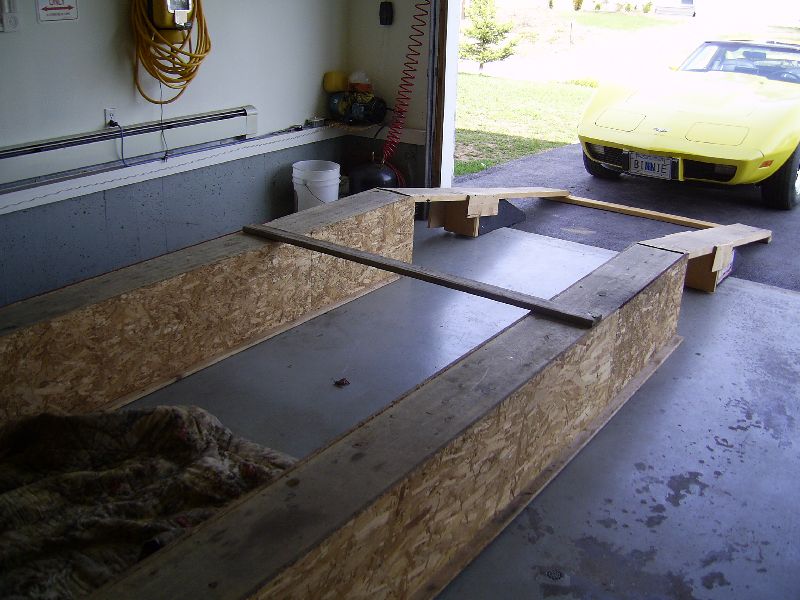
An old sleeping bag makes a nice pad for lying on when under the car.
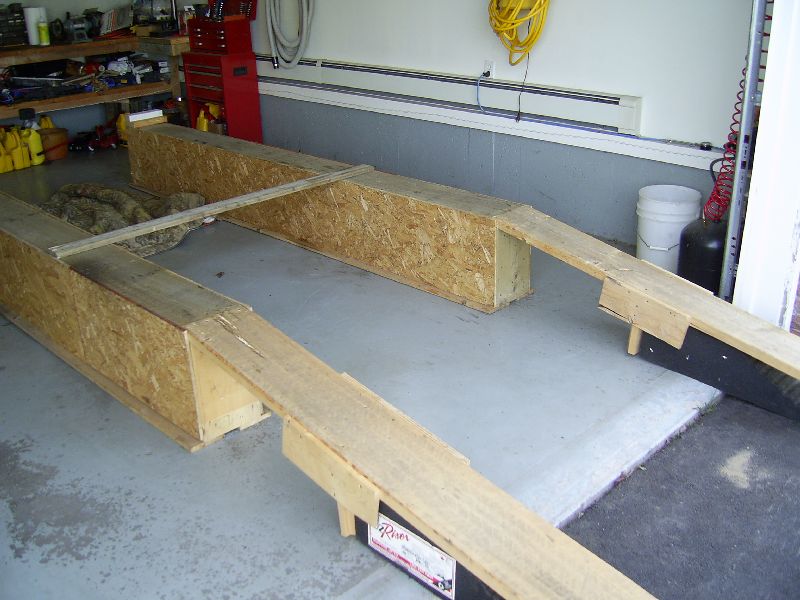
You can see the rubber pads that I use for extra support for driving up and down.
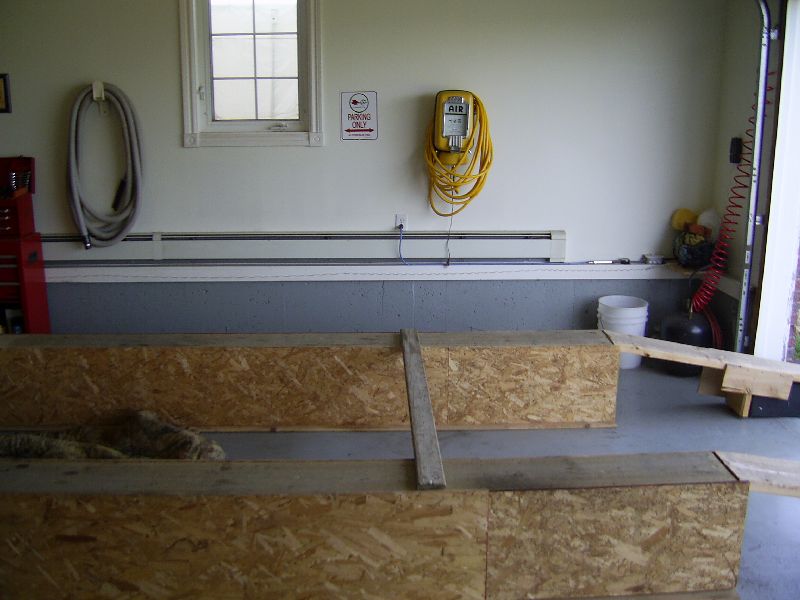
I sometimes attach a board to keep the ramps aligned when I drive up on them.
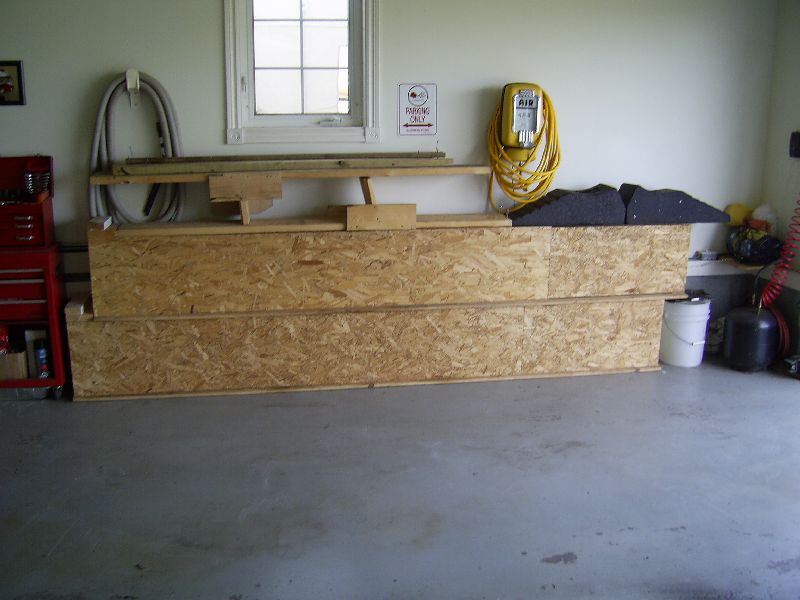
You can store the ramps along the wall of your shop when not in use.
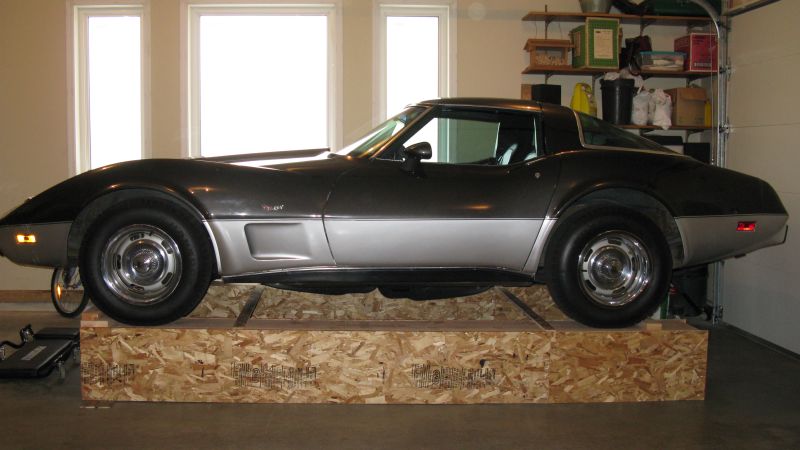
Glenn's ramps.
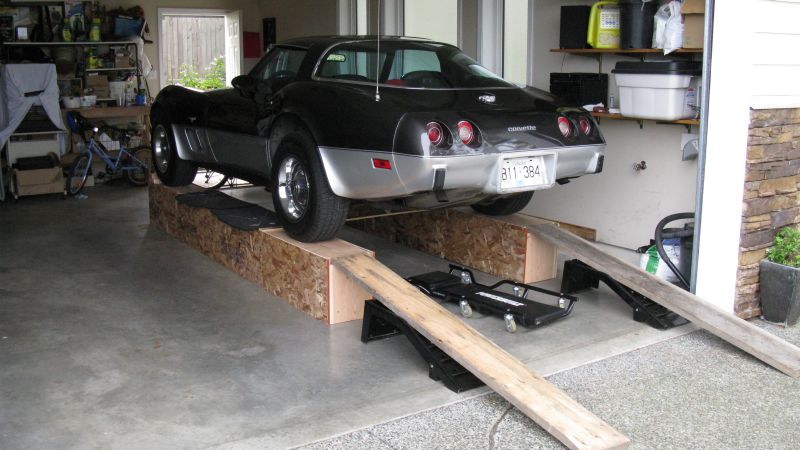
Glenn's setup for getting his car up on the ramps.
Shel Myers from British Columbia made a few modifications to better suit his particular use. The ramps have pot lights installed (three on one ramp, two on the other), which allow each lamp to pivot and swivel in order to place light where it is needed. Each ramp has a switch to control each set of lights. The drivers side ramp has a built-in extension cord and power outlet so power tools can be used while working under the vehicle. Shel also made the actual 'ramp' portions with vertical oriented 2 x 6 in order to allow a vehicle to drive on without the need for additional supports. Shel also decided to make his ramps a full 12" wide using 2 x 6 lumber to do it since it was far cheaper and allows for easier rebuilding if one section fails or is otherwise rendered unusable. Shel also left two openings between studs unsheeted on the inside of each ramp to allow for tool and parts storage which proves to be very handy. View the pictures below:

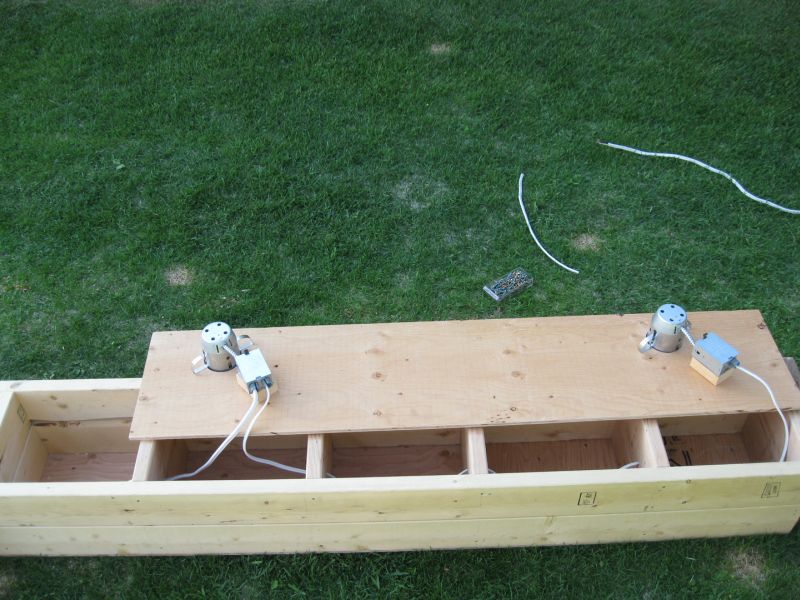

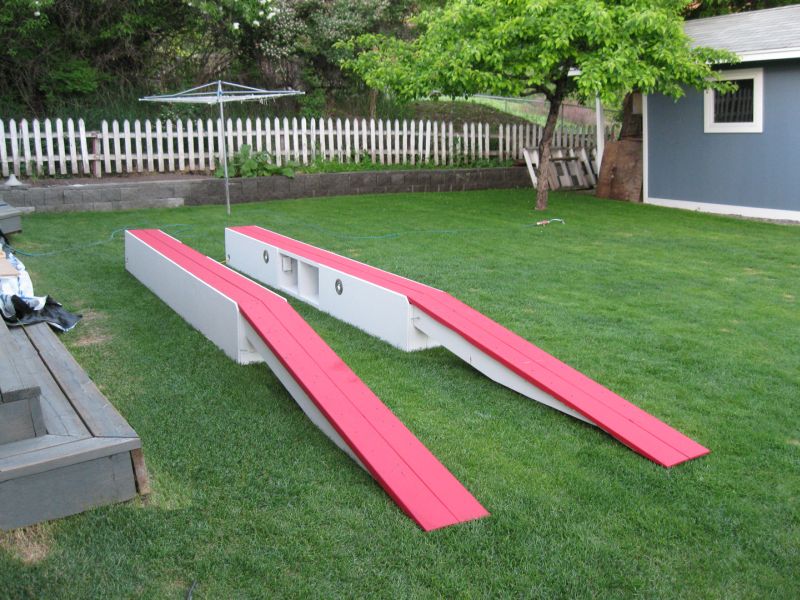
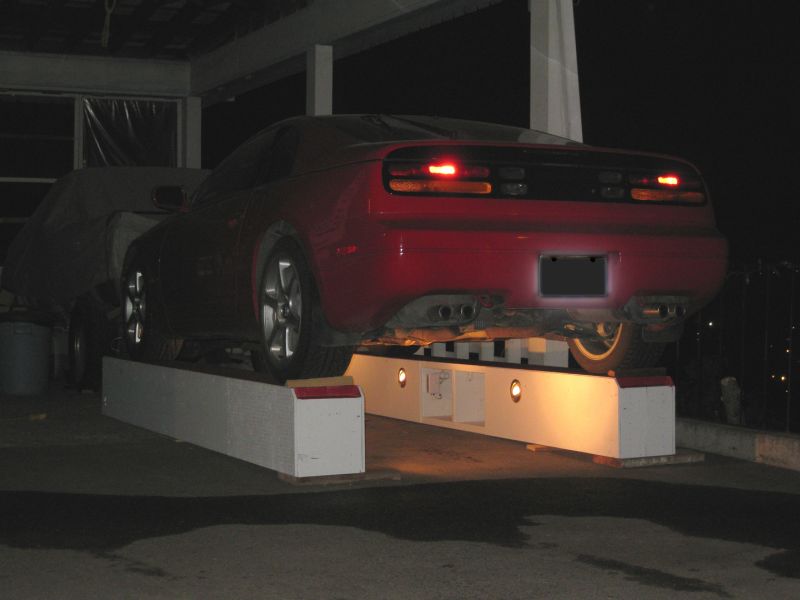
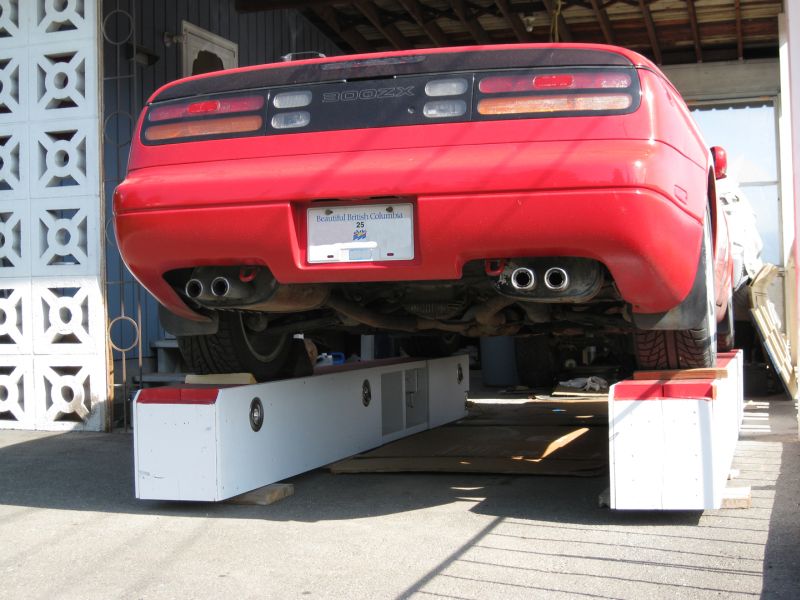
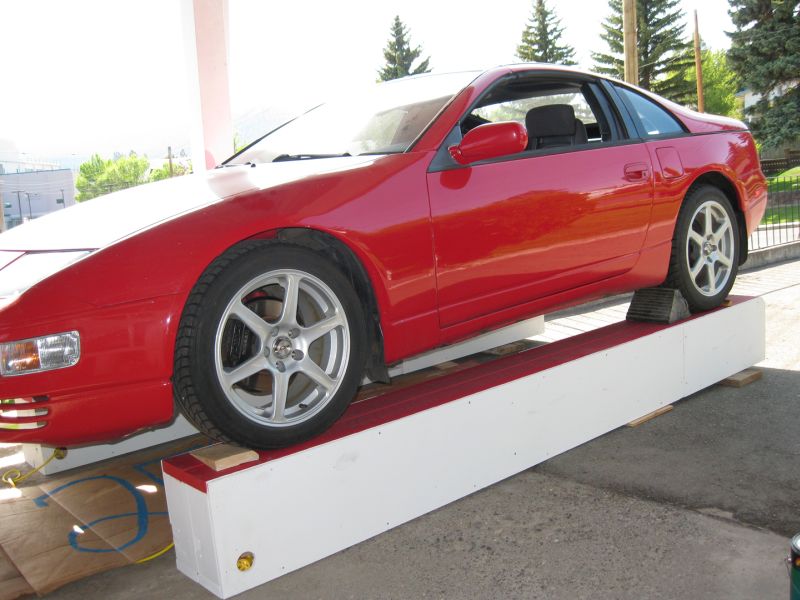
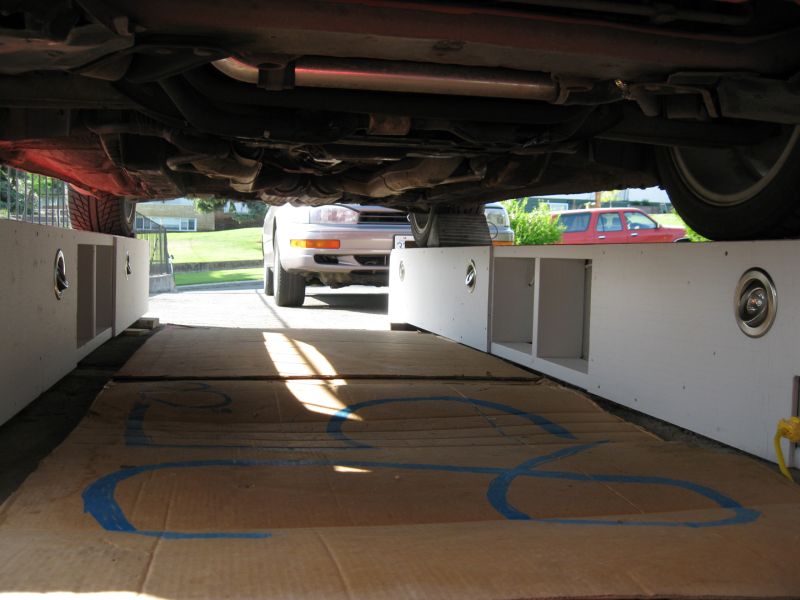
Douglas Anderson's Ramps
